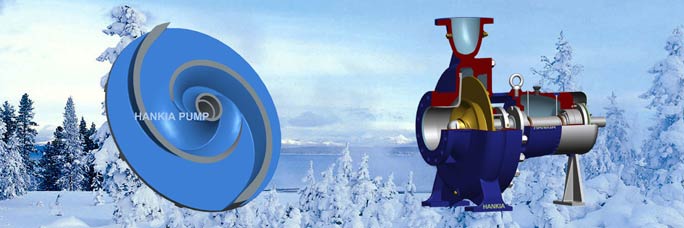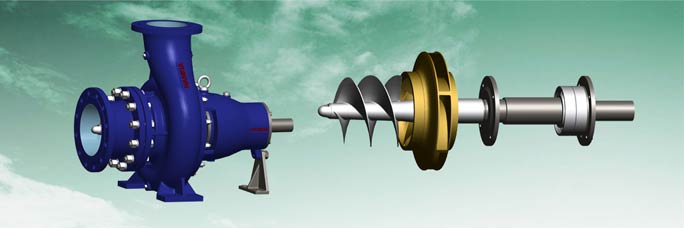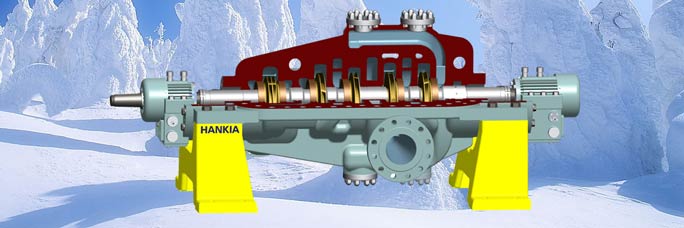Pump technology
- Pump viscosity correction
- Impeller cuts
- How to change the pump performance
- Centrifugal pump introduction
- Cavitation
- Right impeller selection
- Pump installation
- Vertical turbine pump
- Tops for specifying pumps
- Determine between end suction pump and double suction pump
- Understanding the NPSH
- Axially split case pump
Pump category
How to sepecify right pumps
The days when pump system designers were forced to compromise with standard products that couldn’t be modified to their specific applications are long gone.
Hankia Pump can supply, axially split case pump, single stage end suction pump, multistage ring section pump, submersible sewage pump, vertical turbine pump, petroleum chemical pump according to ISO and API610/ISO13709 (BB1, BB2, BB3, BB4, BB5, OH1, OH2). In order to select the right pumps from the Hankia Pump for your projects, our engineers suggested the following tips for your reference.
1. Have the voltage and performance requirements been defined?
The performance of a pump can vary dramatically, depending on the equipment and the environment in which the pumping system will operate. Planning for variations in power supply, pressure, media temperature and loading can help inform your decision. One best practice is to define a pumping system’s performance requirements over a range of externally variable conditions, such as altitude and ambient temperature, rather than at a single operating point.
As a first step, evaluate the general requirements including space limitations for the pump, wetted materials, power available to drive the pump, and the target cost range. The focus can then turn to the pumping system’s tolerance to various system specs, in addition to the conditions for which the system is primarily designed.
2. What are the system’s electrical considerations?
It’s important to define a nominal voltage with an allowable tolerance range. Ask what power will be available to start and operate the pump? A dc-operated pump driven by a universal power supply can provide more flexibility than an ac-driven pump in locations where portability, speed control, or compatibility is important.
Available motor startup current is critical, especially when the pump must start against system vacuum or pressure. The pump may not start at all, or shut down on over-temperature, with overall system failure to follow.
3. Are vacuum and flow rates within acceptable ranges?
If a pump can create a vacuum greater than the vacuum required by a device (for example, the device contains soft tubing), excessive vacuum could cause the tubing to collapse. The can lead to a system shutdown or equipment damage.
Also pumping systems that create pressure beyond a system’s range can damage connectors, sensors and other expensive parts downstream, causing external leakage, and possibly even jeopardize operator safety. Properly applied pressure regulating devices can help avoid such a scenario. So in lieu of defining a singly point of vacuum rate and one flow rate, look to specify a tolerance range of flow, vacuum and pressure.
4. Will the temperature fluctuate?
While a pumping system may be rated for a specific media temperature, real-world ambient conditions can interfere. The pump may be mounted inside of a machine or instrument where the localized temperature is significantly higher than rated temperatures because of lack of proper ventilation. Again, this can cause the pumping system to shut down and equipment to fail.
5. How will the duty cycle play out?
Anticipating duty cycles can save money on energy, overall design cost and increase the life of the pump. Though a few pumps do operate continuously at a fixed speed, they have become the exception in a new energy-conscious environment. Systems may require that the pump’s performance vary during fluctuating demand. In these cases, a brushless dc motor equipped with logical speed controls offers such a feature.
Modifications, such a using a larger motor, can also help in the case where a pump may have to restart against a load.
In addition to these questions, a successful design will also account for:
• minimizing any liquid cavitation effects
• the need for self-priming capability
• chemical compatibility between pump and the fluid as well as handling particulates in the media
• reverse flow through the pump
• system leakage
We have the seperate talk about the selection between end suction pump and split case pump. Asking the right questions and rooting out the answers will ensure that you get the right pump on your first try. If you need more professional pump technology support and pump technology consult, please contact the International Trading and Cooperation Center (ITCC) for help.





